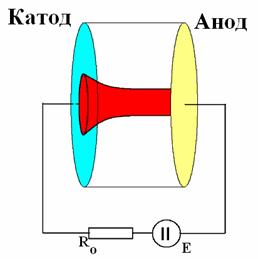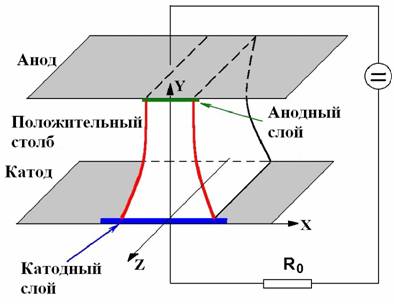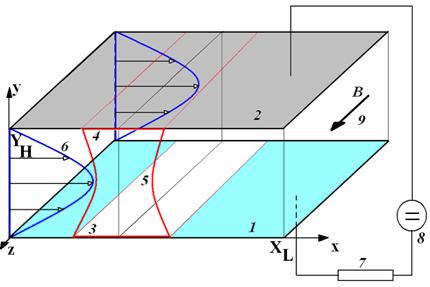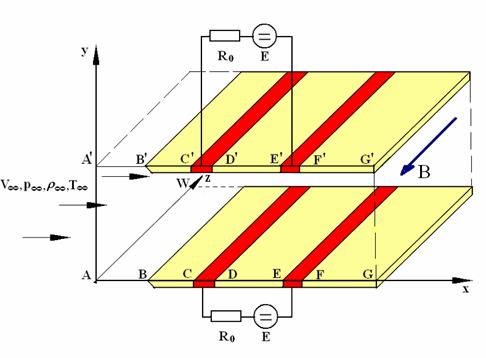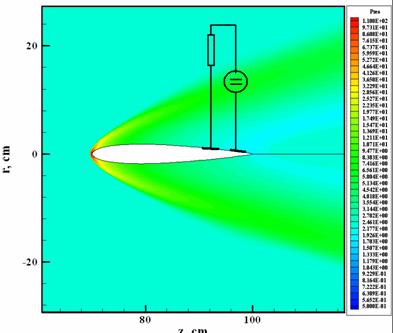The aerophysics of the gas discharges and laser plasmas
Main results
-
Gas discharges - classical objects of research on the Department of
Physical and Chemical Mechanics;
-
Various models have been developed to calculate the spatial electrodynamic
structure of gas discharges under various conditions:
-
Axisymmetric and planar two-dimensional drift-diffusion models for modeling a normal glow discharge;
-
Axisymmetric and planar two-dimensional drift-diffusion models for modeling the dynamics of gas discharges
in an external magnetic field;
-
Self-consistent models for calculating the spatial structure of surface discharges in a
high-speed gas flow (including the presence of an external magnetic field);
-
More information can be found in the books:
-
Surzhikov S.T. Physical mechanics of gas discharges, Moscow: BMSTU publishing, 2006, 640 p (in russian);
-
Surzhikov S.T. Hypersonic flow of a rarefied gas over a surface glow discharge with an external magnetic field, Moscow: IPMEch RAS, 2011. 273 p (in russian);
-
S.T. Surzhikov Computational Physics of Electric Discharges in Gas Flows, De Gruyter, 2013. xi+428 p;
-
J.J.S. Shang, S.T. Surzhikov Plasma Dynamics for Aerospace Engineering, Cambridge University Press, 2018,
xiv+388 p;
-
Currently, computer codes are being developed that implement a three-dimensional diffusion-drift model,
as well as two-dimensional and three-dimensional kinetic models based on the particle-in-cell method;
-
Detailed verification and validation of developed computer models is required.
An experience of development of computational and theoretical models and software systems for aerospace applications
